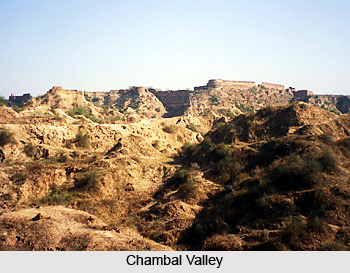 There are three large scale industries in Dholpur district namely, the High-tech Precision Glass factory, Dholpur; Dholpur glass works Ltd., Dholpur and Rajasthan Explosives Limited Dholpur. The High-tech Precision Glass factory, Dholpur; Dholpur glass works Ltd., are public limited concerns. They went in to production in April 1964 with an authorized share capital of Rs. 50 and Rs. 10 Lacs respectively.
There are three large scale industries in Dholpur district namely, the High-tech Precision Glass factory, Dholpur; Dholpur glass works Ltd., Dholpur and Rajasthan Explosives Limited Dholpur. The High-tech Precision Glass factory, Dholpur; Dholpur glass works Ltd., are public limited concerns. They went in to production in April 1964 with an authorized share capital of Rs. 50 and Rs. 10 Lacs respectively.
Dholpur Glass Works Ltd. was established under a special agreement with erstwhile Dholpur State as a proprietary concern in 1943. Later in the year 1945, it was converted in to a public limited company. In the year 1956, it started manufacturing laboratory and hospital glass wares, as well as penicillin vials providing employment to the nearly 900 workers. The raw materials used are sand soda ash, borax, dolomite, feldspar, selenium, black powder etc.
During the last century Dholpur remained industrially backward. It mainly depended on agriculture and only a few cottage industries were in existence.
Quarrying of building stone was the only activity which provided employment to the comparatively large number of persons. Baroli, Bari, Baseri, Sarmathura were important places where building and millstone were quarried. These quarries have been famous for quality stone and have been worked on for several centuries. None of industries were properly organized. They were mostly cotton industries subsisting on the patronage of village communities. People, however, started using imported machine-made goods from the neighboring commercial and industrial centers such as Agra, Mathura, Delhi and Gwalior. The better and cheaper mill-made cloth adversely affected the handloom, spinning, dyeing and weavings. Bangles made of transparent glass lured the women folk to give up their crude glass and lac bangles, further more the monopoly of arts and crafts by individuals meant that the skills died with them, in the absence of regular, organized inheritance of such skills.
Dholpur district has a vast area, full of rocks, especially the Dholpur and Rajakhera Part of the Chambal valley is covered by Kachhar. Masonary stones, concrete, sandstone and lime stones are found in plenty in the area. Glass sand is produced from unconsolidated weathered sandstone and is sold mainly to glass manufactures.
Quarrying work is mainly done by hand with the help of chisel, hammer, iron bars and the over-burden is blasted with gun powder. Sandstone areas are leased out to private sector under the Rajasthan mines and mineral concession rules 1959.
Many persons are engaged in weaving, pottery, leather tanning, carpentry, black smithy, rope making etc. In rural areas of the district Rajasthan Khadi and Village industries board, provide guidance and financial help. There are other agencies too, to encourage such units. Village ghanis, Moodha industry, sugar cane-crushers, Khas Distillation are the other units, which keep persons employed and provide opportunity to local crafts men and artists to come forward.



















